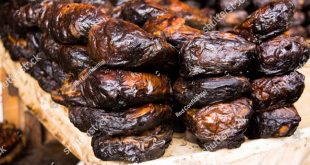
Shippers guide is the learning page of MMS Plus. This week features the guidelines for the establishment of cottage/kitchen scale food industries in Nigeria. These guidelines are for the interest of the general public especially for individuals that want to engage in manufacturing of cottage/kitchen scale food products in Nigeria. These guidelines prescribe the minimum good hygienic practice requirements for the facilities, controls to be used in the manufacture, processing and packing of cottage/kitchen food products to ensure that they meet quality.
A cottage food operation still has to comply with the labelling, adulteration and other provision found in the Agency regulations, as well as other applicable state or federal laws. It is necessary to emphasize that no food product should be manufactured, imported, exported, advertised, sold or distributed in Nigeria unless it has been registered in accordance with the provisions of Act Cap F33 LFN 2004.
Consequently, a food product shall not be manufactured in Nigeria unless the factory is inspected and certificate of recognition is issued by NAFDAC.
NOTE: The following products listed below Potentially Hazardous Foods/Temperature Controlled for Safety Foods (PHF/TCS) are exempted from registration under cottage/kitchen scale Industry. Except if otherwise, if the intending applicant(s) has the adequate equipment, facilities and personnel with adequate education/training, experience in the manufacturing, processing and packaging of the product(s):

- Meat and meat products
- Poultry (Chicken, Eggs, Turkey, Duck)
iii. Fish and Fish products
- Milk and dairy products
- Cooked rice, bean or vegetable
- Baked potatoes
vii. Beverages
PERSONNEL
- There should be an adequate number of qualified personnel to perform assigned duties.
- Each personnel engaged in food manufacturing should have Basic education /Adequate Training Experience.
- Personnel should wear protective apparel/gears, such as head, face, hand, and arm coverings to protect products from contamination.
- Personnel should practice good sanitation and hygienic habits.
BUILDING/FACILITIES:
- Production Area
- The apartment provided for production can either be a purpose – built structure or an existing standard kitchen.
- ii. The apartment must be minimum of 12×12 feet two rooms or a kitchen (12 × 12 Feet) with standard store and must be adequate for the orderly placement of equipment and materials to prevent mix-ups between different materials.
- iii. Windows and entrance doors should be screened with insect-proof netting and the doors should be self closing to prevent contamination.
- iv. Adequate ventilation, cooling, lighting should be provided in all areas to facilitate easy identification of materials, cleaning, maintenance and proper operations.
* Finished Product Store:
- All finished products must be stored in a cool dry place following safe, good handling guidelines to prevent adulteration caused by insect, household chemicals, water damage and insanitary condition.
EQUIPMENT:
- The design of equipment should be such as to make it adequate and suitable for its Intended use
- Its layout and design must aim to minimize the risk of mix-ups and permit effective Cleaning and maintenance in order to avoid cross contamination, build-up of dust, dirt, food particle or any other contaminant that can affect the quality of the product
- The parts of the equipment that make contact with products should be made of non- Toxic/non t reactive materials such as food grade stainless steel etc.
RAW/PACKAGING MATERIALS AND SOURCES:
- Raw and packaging materials should be sourced from traceable source.
- They should be of good quality in order to produce quality products.
- All incoming materials should be stored under appropriate storage conditions.
QUALITY CONTROL
Cottage Food Producing industry are required to send samples from every batch of their finished products to a public analyst for comprehensive analysis and document same in a file while rectifying any anomaly in the parameter reading by carrying out the needed process change(s) for the overall product quality conformity .
ENVIROMENTAL SANITATION AND PERSONEL HYGIENE:
- Appropriate sanitation measures should be taken to avoid contamination risks of all kinds.
- The entire production area(s) should be cleaned frequently and thoroughly in accordance with the standard operational procedure (S.O.P) for cleaning.
- Equipment should be thoroughly cleaned in strict compliance to the S.O.P
- Water system toilets and washing facilities should be appropriately located, designed, equipped and the sanitation shall be maintained satisfactory in strict compliance to the S.O.P
- Eating, Drinking and Smoking should not be permitted when production is ongoing in the production area and storage.
- All operators should wear appropriate protective garments/gowning.
- Production staff should undergo food handler’s test/medical examination at least once a year.
- Persons known to be suffering from communicable diseases or with wounds should be excluded from duty until they are certified medically fit again. Wastes should be adequately disposed of in strict compliance to the S.O.P.
DOCUMENTATION
The aim of documentation is to define the specification for all materials and methods of manufacture and control, to ensure that all personnel concerned with manufacture know what to do and when to do it. The required documentation includes the following:
- Standard Operating Procedure (SOP’s) for Production.
- Standard Operating Procedure for cleaning of equipment and production area(s).
iii. Standard Operating Procedures for Waste Disposal.
- Food handler’s test certificates
- Fumigation certificates.
CONSUMER COMPLAINT AND RECALL:
All consumer complaints must be thoroughly investigated and documented. Step must be taken to prevent future occurrence. If a recall is decided upon, it should be done quickly using the production batch history through the product distribution records.
All records of recalled products must be kept. In event of recall, NAFDAC must be fully notified of all actions at receipt of consumer complaint, during investigation and actual recall activity.
DISTRIBUTION SYSTEM:
Record of product distribution network must be properly kept for easy recall of defective products. Distributors’ names, addresses, fax, phone, email etc should be obtained.
TRANSPORTATION AND HANDLING:
Products should be handled and transported under conditions which prevent deterioration, contamination, spoilage and breakage to ensure that the product quality is maintained up to the time of delivery to the consumer.
LABEL
Product should be labeled adequately in English language and the label should also contain composition/ingredient(s) list, and within the label should be stated the net weight/volume of content, address, lot/batch number, production date, expiry date, direction for use and NAFDAC registration number. Note: Nutritional claim(s) are not allowed on the label.
PRODUCT REGISTRATION
The food product should be registered with NAFDAC upon industry recognition and the following documents will be submitted for the processing of the product. A letter requesting for production inspection addressed to the Director Food Safety and Applied Nutrition Directorate (FSAN).
– The letter will be accompanied with the Standard Operating Procedures (SOP) Cleaning/Sanitation/Hygiene for equipment, environment and personnel, Certificate of Food Handlers test for production staff, List of equipment, certificate of fumigation, Certified copy of Company registration Certificate or Business name, Evidence of Trade mark registration, vetted label/primary packaging material and payment receipt of product registration fees.
– Filled Product Registration form must be accompanied with all the above listed documents be submitted to Registration and Regulatory Affairs directorate.
 MMS PLUS NG – Maritime, Aviation, Business, Oil and Gas News Online Newspaper with coverage in Maritime, Oil and Gas, Aviation, Power and Energy as well as Financial News
MMS PLUS NG – Maritime, Aviation, Business, Oil and Gas News Online Newspaper with coverage in Maritime, Oil and Gas, Aviation, Power and Energy as well as Financial News









